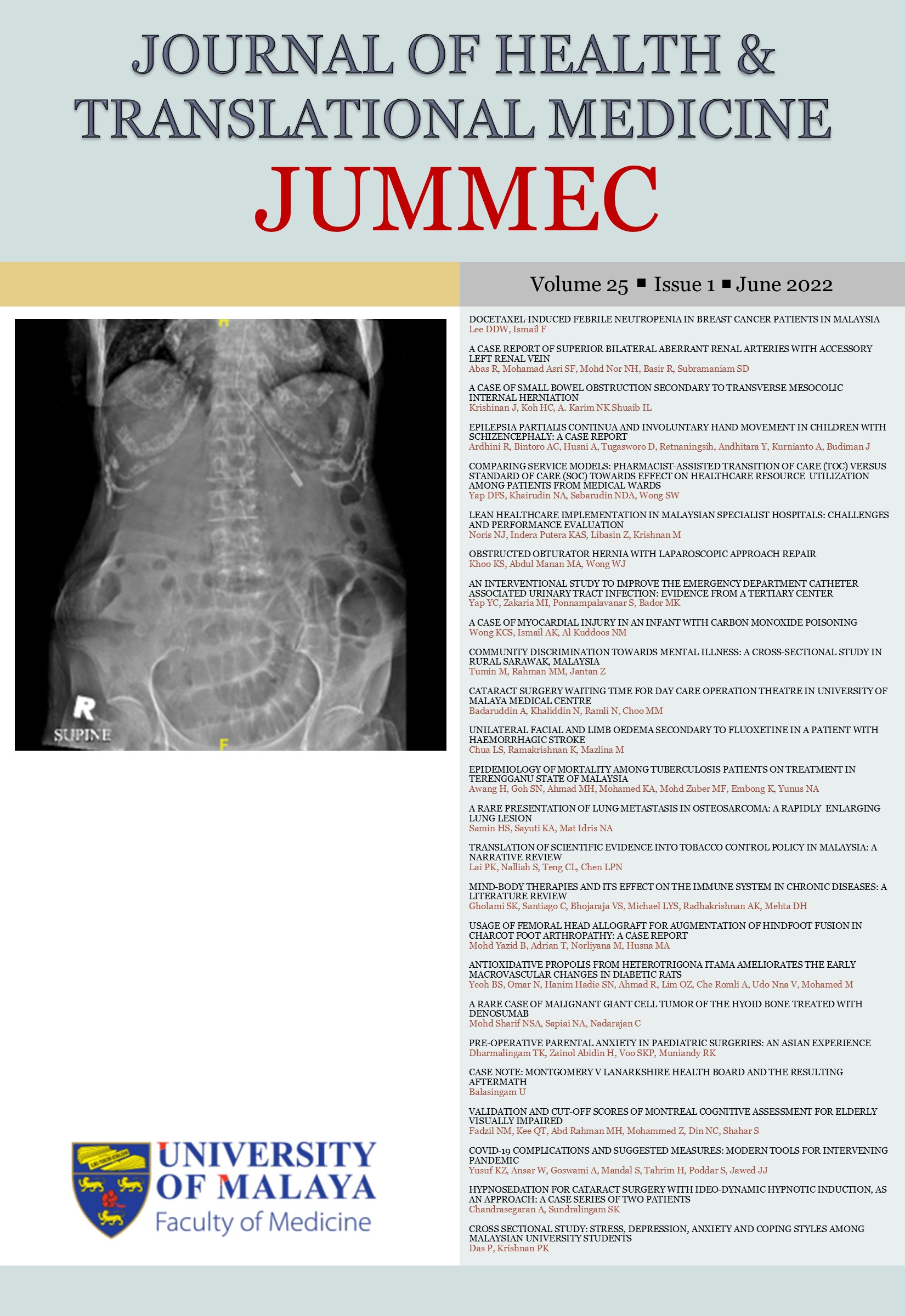COMPARING SERVICE MODELS: PHARMACIST-ASSISTED TRANSITION OF CARE (TOC) VERSUS STANDARD OF CARE (SOC) TOWARDS EFFECT ON HEALTHCARE RESOURCE UTILIZATION AMONG PATIENTS FROM MEDICAL WARDS
Received 2020-10-17; Accepted 2021-09-15; Published 2021-10-10
DOI:
https://doi.org/10.22452/jummec.vol25no1.5Keywords:
Transition of care, Healthcare resource utilization, Bedside dispensing, Medication reconciliation, ReadmissionAbstract
Introduction: Suboptimal care transition post-discharge may potentially increase subsequent healthcare system utilization. Transition of care is a service approach to support continuum of patient care after discharge. Objectives: This study aimed to compare the effect of pharmacist-assisted transition of care versus standard care models towards healthcare resource utilization among medical ward patients.
Methods: A cluster randomized controlled study was conducted among medical ward patients in a Malaysian secondary hospital from July to December 2019. Intervention group received pharmacist-assisted discharge medication reconciliation, bedside discharge medication delivery with counselling and a timely post-discharge callback. Control group followed standard discharge process with medication collection at ambulatory pharmacy without post-discharge phone calls. Study endpoints included pharmacy first refill persistency, resolution on unintended discharge medication discrepancies and 30-days all-cause rehospitalization.
Results: A total of 168 patients with 84 patients in each arm were recruited. Intervention resulted a higher pharmacy first refill persistency (70.2% versus 50.0%, p<0.05), indicating a lowering in subsequent unscheduled refill rate. Under intervention, consistent rate of resolution from discrepancies (100.0%, IQR 0 versus 100.0%, IQR 67; p<0.05) was demonstrated that corresponded to medication cost-savings of RM6.80 per prescription over control. Unplanned rehospitalization was not significantly different between groups (p>0.05) but towards a trend of 10% reduction after intervention.
Conclusion: Pharmacist-led transition care model demonstrated promising effect towards a reduction in healthcare resource use compared to standard care. Future studies for its standardization across institutions are warranted to facilitate service expansion.
Downloads
Downloads
Published
Issue
Section
License
All authors agree that the article, if editorially accepted for publication, shall be licensed under the Creative Commons Attribution License 4.0 to allow others to freely access, copy and use research provided the author is correctly attributed, unless otherwise stated. All articles are available online without charge or other barriers to access. However, anyone wishing to reproduce large quantities of an article (250+) should inform the publisher. Any opinion expressed in the articles are those of the authors and do not reflect that of the University of Malaya, 50603 Kuala Lumpur, Malaysia.


